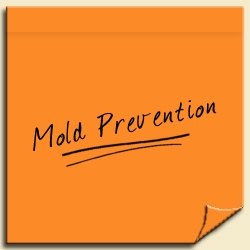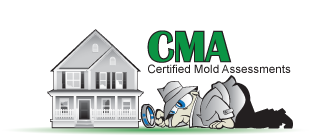 Discovering a mold infestation in your home can be devastating. Mold frequently results in decreased property value, and serious mold infestations tend to “stay” with the home, in terms of being on record for real estate agents and homebuyers to see.
Discovering a mold infestation in your home can be devastating. Mold frequently results in decreased property value, and serious mold infestations tend to “stay” with the home, in terms of being on record for real estate agents and homebuyers to see.
That’s not even the biggest problem. Any type of mold can swiftly bring on an array of respiratory issues, asthma, depression and other health issues. Once the conditions within the home are right for mold to start growing, the mold itself can be very difficult to find, so taking precautions to prevent it in the first place is a very good idea.
To prevent the invasive mold taking up residence in your home with you, here are a few simple household tasks that can save your house from being invaded by any unwanted mold infestations.
Fix Leaks
Everyone gets a leaky faucet or pipe once in a while. As soon as you notice the leak, though, be sure to adjust or caulk it. Otherwise, mold has the perfect moist opportunity to establish a breeding ground. Mold can begin to grow as quickly as 24 hours after water begins leaking.
Properly Vent Air
Appliances such as stoves, washers and dryers accumulate moisture by way of their vents. This air should be directed outside to avoid creating moist air for mold to grow. Also, be sure to clean any humidifiers you may have regularly. Failure to do so may result in mold building up inside.
Don’t Have Too Many Indoor Plants
Many people have indoor plants to keep the air inside their homes fresh and clean in addition to the beauty that the plants add. However, the soil in the pots creates an ideal place for mold to dwell, and the mold spores can then easily travel through the air to rest on other surfaces of the home.
Channel Water Away From the Home
Your home’s crawl space (or even your basement) is likely a less-visited part of your home, so you may not notice the air quality of these spaces. To ensure that mold doesn’t have an opportunity to grow near the foundation of your home, make sure that the ground around your home is properly sloped to direct excess water away from the foundation. Otherwise, the water may begin to seep into your basement or crawl space.
Get a Humidity Meter
The humidity level inside your home should be kept at low levels, ideally between 30 and 50 percent. Having a meter will allow you to act quickly if conditions begin to become more humid. A dehumidifier is a good option to keep proper levels of moisture in the home. Condensation gathering on windows or walls may be a noticeable sign of high levels of humidity.
Cover Crawlspace Soil
Basements and crawlspaces are likely culprits for harboring mold. The dirt that is exposed in the crawlspace under your home can easily become moist, thus creating an invitation for mold to settle in. To prevent the mold from drifting up to the rest of your home, cover the exposed soil with a layer of plastic to act as a barrier between the soil and the air above.
The most severe mold infestations are oftentimes hidden out of sight. Therefore, treating only the visible mold that you spot around your tub or sink will not always solve the problem. Often times, intervention from a trained professional is the right way to prevent mold from becoming a serious problem in your home.
